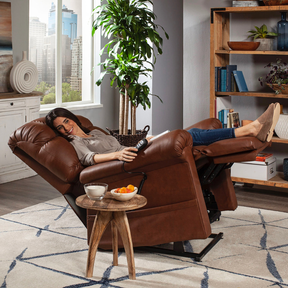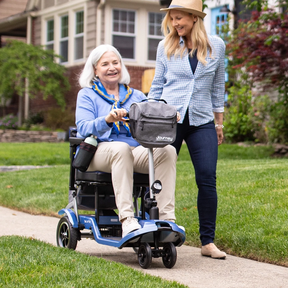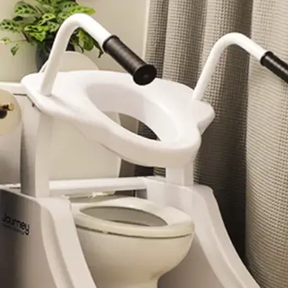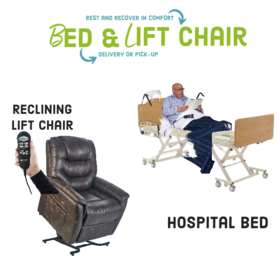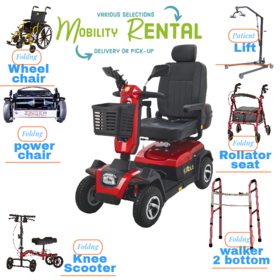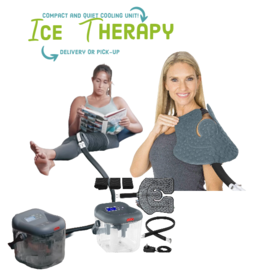Blog Discover the Best Patient Lift Slings for Sale: Comfort and Safety Combined
Tue, 08/15/2023 - 19:04
Patient lift slings are an essential tool for caregivers, allowing a safe and comfortable transfer for patients with mobility issues. These slings come in different types and designs, each suited for specific patient needs. Choosing the right sling is crucial for both the patient's safety and comfort, so it's important to consider various factors like size, mobility and support requirements, material, and durability. A poorly fitted sling can cause injury or discomfort, while a well-fitted one offers adequate pressure distribution and prevents the risk of pressure ulcers.
Types of Patient Lift Slings
When it comes to patient lift slings, there are three main types to consider: full-body, stand-assist, and transfer slings. Full-body slings are typically used for patients with limited mobility, while stand-assist slings are designed for patients who can stand with some assistance. Transfer slings, on the other hand, help transfer patients to chairs, beds, or wheelchairs. Each type of sling comes in a variety of materials, including mesh, padded, and nylon, to cater to different levels of support and patient needs. When choosing a patient lift sling, it's important to consider factors such as the patient's size and weight, mobility and support requirements, ease of use, and durability. By considering these factors, you can ensure that the patient is both comfortable and safe during the lifting and moving process.
Factors to Consider When Choosing a Patient Lift Sling
Choosing the right patient lift sling largely depends on the patient's specific needs and requirements. For instance, the size and weight of the patient should be taken into consideration, as it affects the sling's weight capacity and size. Mobility and support requirements should also be considered to ensure that the patient can be lifted and moved safely and comfortably. Ease of use is another important factor to consider, especially for caregivers who might be using the sling frequently. Durability and material are also important, as they determine the sling's lifespan and resistance to wear and tear.
When selecting a patient lift sling, it is crucial to pay attention to these factors to achieve both comfort and safety for the patient and caregiver. Remember, a poorly fitting sling can cause discomfort or even lead to injury. So, taking the time to choose the right sling can help improve the patient's quality of life and overall well-being.

Importance of Comfort and Safety:
Patient Lift with Comfort: Comfort is of the utmost importance when it comes to patient lift slings. Proper pressure management is crucial to prevent discomfort and even injury. Look for slings that are designed to evenly distribute pressure and prevent any unnecessary stress on the patient's body.
Patient Lift with Safety: Safety features are also essential. Make sure to choose a sling that is equipped with adjustable straps and secure fastenings. You want a sling that provides a snug fit but is also easy to remove in case of an emergency. Additionally, look for slings made from high-quality, durable materials to ensure longevity and repeated use.
Overall, investing in a high-quality patient lift sling is crucial for both the comfort and safety of the patient and the ease of use for the caregiver. So, choose wisely and don't compromise on these key factors.
How to Select Right Patient Lift Sling:
When it comes to selecting the right patient lift sling, it is crucial to keep in mind the specific needs and requirements of the patient. For instance, if the patient has sensitive skin, a sling made from breathable and moisture-wicking material would be the best choice. Also, patients with certain medical conditions, such as spinal cord injuries, may require lift slings that offer extra protection and support for their neck and spine.
It is also essential to consider the cost when choosing a lift sling. Some lifts may be too expensive, but it is crucial not to compromise the safety and comfort of the patient in a bid to save on costs. Fortunately, there are affordable options available in the market that still maintain high safety standards.
In addition to selecting the appropriate sling, it is vital to ensure that the sling is used correctly. Proper usage includes selecting the correct sling size, inspecting for damage or wear and tear, and ensuring that the sling is appropriately positioned and secure before lifting the patient. A patient lift sling that is used correctly ensures the safety and comfort of the patient and improves the overall caregiving experience.
How to Properly Use a Patient Lift Sling:
Before using the patient lift sling, ensure the patient's weight and height match the maximum weight capacity of the sling. Check for any wear and tear, and position the patient appropriately before slowly lifting them. After lifting, check to ensure the sling is correctly positioned and secure and gently lower the patient.
In conclusion, choosing the right patient lift sling is crucial for the comfort and safety of the patient. With the above-highlighted factors, you are on your way to selecting the perfect lift sling that ensures comfort, safety, and ease of use while promoting mobility, independence, and faster recovery.
Conclusion
Patient lift slings are an essential tool for providing comfort and safety while transferring or lifting patients. Choose the right sling by considering factors such as patient size, mobility, ease of use, and durability. Remember, comfort and safety are key while using patient lift slings, so always follow the instructions carefully. It is crucial to select a sling that is appropriate for the patient's specific needs, as this can greatly enhance their overall comfort and well-being.
Considering the patient's size is essential, as using a sling that is too small or too large can result in discomfort or risk of injury. Additionally, assessing the patient's mobility level is important, as certain slings may offer better support for individuals with limited mobility. Ease of use is another crucial factor to consider, as it ensures that caregivers can confidently and efficiently maneuver the sling during transfers or lifts. Lastly, durability should not be overlooked, as a sturdy and reliable sling can provide long-lasting use and peace of mind. By taking all these factors into account, caregivers can ensure that they choose the right patient lift sling that guarantees both comfort and safety for the patient.
Tags
- contest
- event
- supplies
- design
- brand
- video
- Compression
- upright walker
- four wheel walker
- rollator
- wheelchair
- Ostomy
- elegantly
- elegantly
- accessibility
- Mobility
- knee walker rental
- knee scooter sales
- knee scooter
- post operative shoe
- anti-embolic stockings
- pain management
- cryotherapy therapy
- hot cold compress
- compression stockings
- lift chair
- wound Care
- air purifier
- fall prevention
- cushion
- oxygen therapy
- cpap, bipap
- Hospital Bed
- Life Aide
- EMS
- recovery
- splint
- knee brace
- Bathroom
- patient lift
- medical supply
- Wound dressings
- Lightweight Wheelchair
- hospital beds for sale
- sky medical supplies rentals
- compression socks
- Tegaderm Dressing
- Adult Diapers
- Rollator Walker
- Bed Wedge Pillow
- Hospital beds
- Patient Lifts and Slings
- Portable Oxygen Concentrator
- Patient Lift Slings
- knee scooter rental
- folding mobility scooter
- mobility scooter
- medical shoes
- raised toilet seat
- hospital beds for rent
- lift chair recliner
- chair lift
- electric wheelchair
- Power Lift Recliners for Elderly
- Senior Walkers
- Bedside Commodes
- whill wheelchair
- compression hose
- Whill Electric Wheelchairs
- Bariatric Wheelchair
- Recliner Chairs with Lift
- Colostomy Bag
- Crutches
- Medical Wedge Pillow
- skin barrier tape
- Post Surgery Ice Machine
- Bedside Commode
- chair lift recliners
- cane holder scooter
- lift chair prices
- drop arm commode
- rollator walker with ergonomic seats
- Hospital Bed Rental
- Wheelchair Tray
- Golden Technologies Lift Chair
- Nova GetGo Junior Rollator
- power lift recliners
- Knee Scooters and Crutches:
- stand up walker for seniors
- stand up walker as seen on TV
- Women's Walking Canes
- Knee Immobilizers
- Bed Wedge Pillow
- Medical Supply Stores
- Sit to Stand Lifts
- Grab Bars
- Compression Gloves
- incontinence bed pads
- Lift Reclining Chair
- Knee Walker Scooters
- Hernia Belt Near You
- Mobility Scooter Stores Near Me
- Folding Knee Walker
- Oxygen Concentrator Store
- Inogen Battery
- Electric Bed Frames
Related Posts
Get weekly articles in your inbox on the latest medical supply news, exclusive deals, and helpful health tips.
Thu, 05/05/2022 - 03:23
How to Prevent skin infection in Older Adults
Skin infection is a common problem among older adults.
Sat, 10/22/2022 - 16:37
6 Ways to Heal Faster After an injury or a Surgery the easy way
You probably have a lot of questions if your doctor has suggested surgery.
